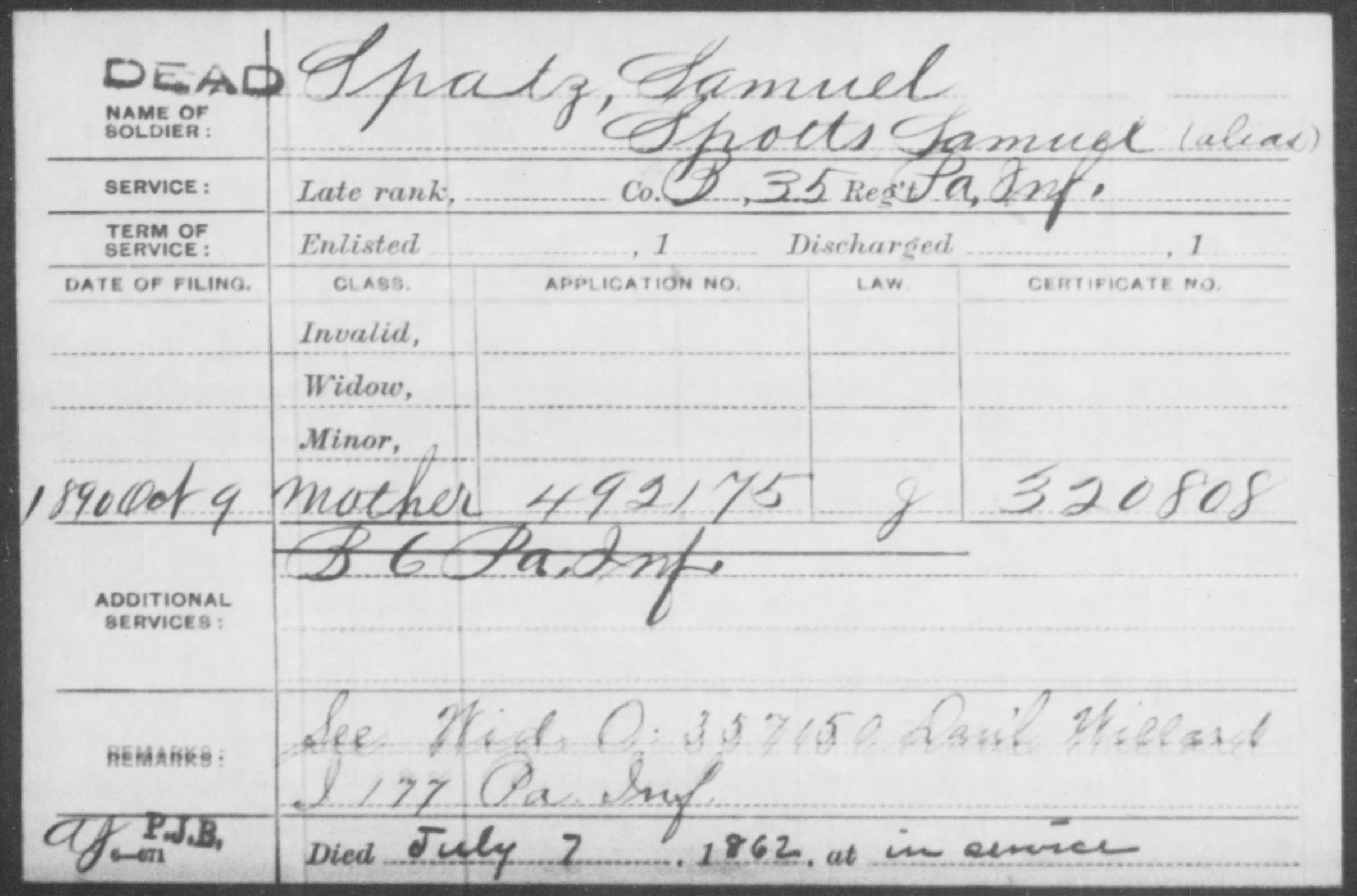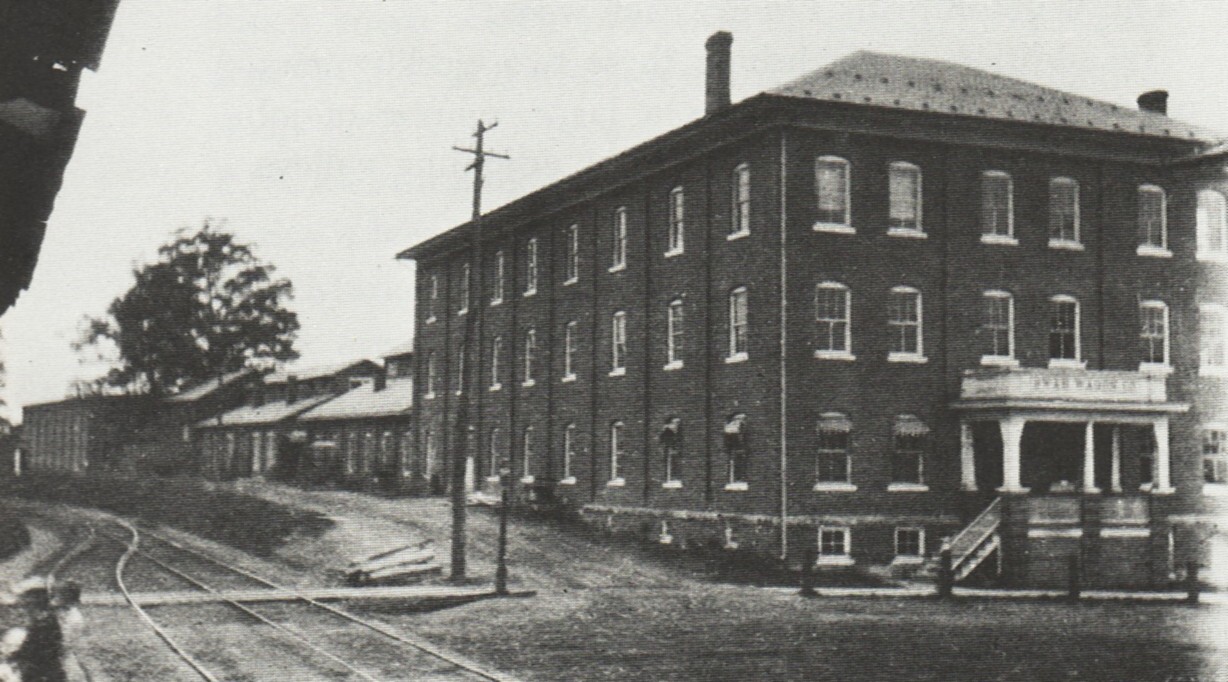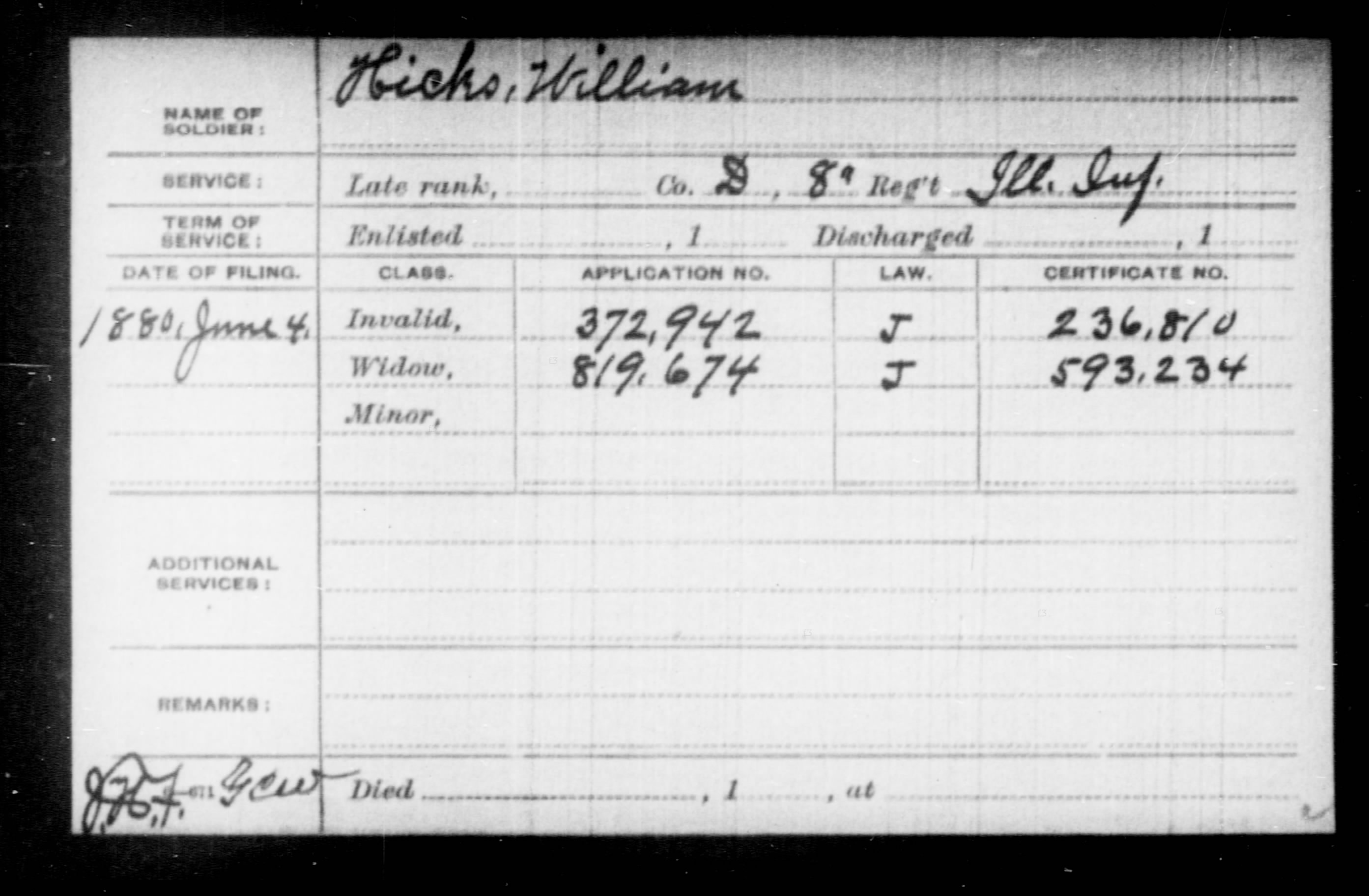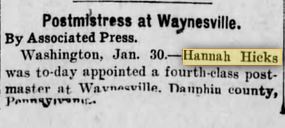Selected Items from the Pension Files of Mrs. Daniel Williard
Posted By Norman Gasbarro on April 5, 2016
Daniel Williard is buried at Zion (Klinger’s) Cemetery at Erdman, Lykens Township, Dauphin County, Pennsylvania. His grave marker is a government issue stone which notes that he served in the 177th Pennsylvania Infantry, Company I.
Daniel Williard is honored on the Lykens G.A.R. Monument. He’s named as a Private who was a member of the Heilner Post.
From the grave marker, it is clear that Daniel Williard served in the war. Since he died on 5 December 1885, prior to 1890 when the requirements were liberalized to include old age as a valid reason for a pension, it is not unusual that there is no record that he applied for a pension for himself. However, a pension application was located for his widow, Elizabeth [Long] Williard, who applied for benefits in 1887. Mrs. Williard did not receive her husband’s pension.
In looking into this further, it was found that Elizabeth [Long] Williard had been previously married to a Michael Spatz (or Spotts) and had a child with him, Samuel Spotts (1841-1862). Samuel Spotts was a Civil War soldier who served in the 35th Pennsylvania Infantry (6th Pennsylvania Reserves), Company B, as a Private. The record shows that Samuel died by drowning in the James River near Harrison’s Landing, Virginia.
The Pension Index Card (above, from Fold3) for Samuel Spotts (or Spatz) shows that his mother applied for a survivor pension on 9 October 1890, about 3 years after her widow’s pension application was made. Since she could only get one pension, she was awarded benefits based on her son’s service, not her deceased husband.
Samuel Spotts was previously featured in a blog post entitled Samuel Spotts – Drowned in James River Near Harrison’s Landing, Virginia.
From a speech given by Ned Weaver, the following information is given:
Daniel Williard of Capt. Evitts’ Company I, 177th, died in Lykens, 5 December 1885 or 1886, confusing dates. His widow Elizabeth claimed in 1889 that he died died of consumption and dropsy contracted while in the service those ten months in 1862 and 1863. One wonders. They had 7 children, William Henry Williard, born November 1845; Mary Ann Williard, born 1847; Rebecca Jane Williard, born February 1849; Mary Elizabeth Williard, born August 1852; John William Williard, born August 1855; John Adam Victor Williard, born February 1865; Daniel Frank Williard, born 29 March 1863, who she must have been expecting when Daniel was drafted in October 1862. However, she had 8, one single with Michael Spotts of Northumberland County, before she married Williard, a boy Samuel Spotts who enlisted in the 6th Pennsylvania Infantry Regiment [35th Pennsylvania Infantry] and was evidently killed [sic] during service. She received a $100 bounty in April 1877 for his service. Michael, the father was also in, but returned and was evidently living in Dalmatia, Northumberland County in 1891.
Elizabeth and Daniel Williard were married by a J. P. in Berrysburg, 20 January 1847. When one of the J. P.’s filed her application for pension as being married in 1845, she got all upset and dictated a letter to C. P. Well of the Pension Office, stating that she had no Bible record of the marriage, but she knew when she married, that the oldest boy was two years old, so there! Anyway, she claimed that Daniel caught colds every winter and then couldn’t work, and it was the army’s fault.
Some selected items from the pension applications files of Elizabeth [Long] Spotts Williard are presented below. For each of the pages, click on the thumbnails to enlarge.
For the Service of Samuel Spotts:
For the Service of Samuel Williard:
 ;
;










































